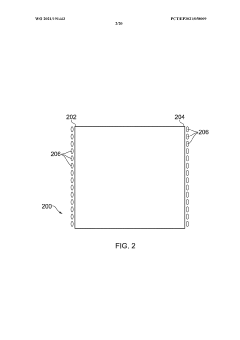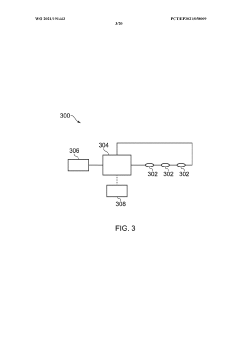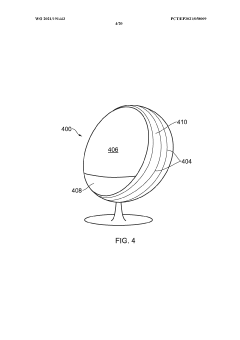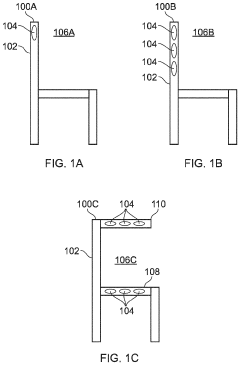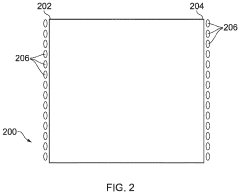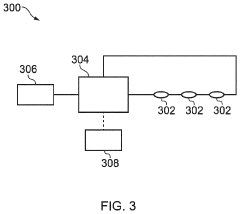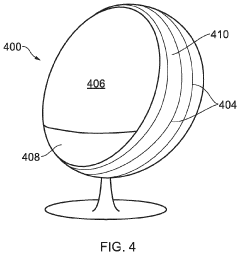Schumann Resonance and its Role in Modern Science
JUN 24, 20259 MIN READ
Generate Your Research Report Instantly with AI Agent
Patsnap Eureka helps you evaluate technical feasibility & market potential.
Schumann Resonance Background and Objectives
Schumann resonance, discovered by physicist Winfried Otto Schumann in 1952, is a set of spectrum peaks in the extremely low frequency (ELF) portion of the Earth's electromagnetic field spectrum. This natural phenomenon occurs in the Earth-ionosphere cavity, with a fundamental frequency of approximately 7.83 Hz and its harmonics. The study of Schumann resonance has evolved significantly over the past seven decades, transitioning from a purely theoretical concept to a vital tool in various scientific disciplines.
The primary objective of researching Schumann resonance is to gain a deeper understanding of the Earth's electromagnetic environment and its potential impacts on various natural and artificial systems. This research aims to explore the intricate relationships between Schumann resonance and global climate patterns, ionospheric dynamics, and even human health. By investigating these connections, scientists hope to develop more accurate models for predicting and monitoring global environmental changes.
Another crucial goal is to harness the potential applications of Schumann resonance in modern technology. This includes improving long-range communication systems, enhancing global lightning detection networks, and developing novel methods for earthquake prediction. The unique properties of Schumann resonance, such as its global nature and sensitivity to ionospheric perturbations, make it an invaluable tool for these applications.
The evolution of Schumann resonance research has been marked by significant technological advancements. Early studies relied on rudimentary measurement techniques, while modern research utilizes sophisticated equipment and data analysis methods. This progression has enabled scientists to detect subtle variations in Schumann resonance parameters, providing insights into complex Earth-atmosphere interactions and solar-terrestrial relationships.
As we look towards the future, the objectives of Schumann resonance research continue to expand. There is growing interest in exploring its potential role in renewable energy harvesting, given its constant presence and global distribution. Additionally, researchers are investigating the possibility of using Schumann resonance as a biomarker for planetary habitability, which could have significant implications for the search for extraterrestrial life.
In conclusion, the study of Schumann resonance represents a fascinating intersection of geophysics, atmospheric science, and electromagnetic theory. Its multifaceted nature and wide-ranging implications make it a critical area of research in modern science, with the potential to contribute to our understanding of global environmental processes and drive technological innovations across various fields.
The primary objective of researching Schumann resonance is to gain a deeper understanding of the Earth's electromagnetic environment and its potential impacts on various natural and artificial systems. This research aims to explore the intricate relationships between Schumann resonance and global climate patterns, ionospheric dynamics, and even human health. By investigating these connections, scientists hope to develop more accurate models for predicting and monitoring global environmental changes.
Another crucial goal is to harness the potential applications of Schumann resonance in modern technology. This includes improving long-range communication systems, enhancing global lightning detection networks, and developing novel methods for earthquake prediction. The unique properties of Schumann resonance, such as its global nature and sensitivity to ionospheric perturbations, make it an invaluable tool for these applications.
The evolution of Schumann resonance research has been marked by significant technological advancements. Early studies relied on rudimentary measurement techniques, while modern research utilizes sophisticated equipment and data analysis methods. This progression has enabled scientists to detect subtle variations in Schumann resonance parameters, providing insights into complex Earth-atmosphere interactions and solar-terrestrial relationships.
As we look towards the future, the objectives of Schumann resonance research continue to expand. There is growing interest in exploring its potential role in renewable energy harvesting, given its constant presence and global distribution. Additionally, researchers are investigating the possibility of using Schumann resonance as a biomarker for planetary habitability, which could have significant implications for the search for extraterrestrial life.
In conclusion, the study of Schumann resonance represents a fascinating intersection of geophysics, atmospheric science, and electromagnetic theory. Its multifaceted nature and wide-ranging implications make it a critical area of research in modern science, with the potential to contribute to our understanding of global environmental processes and drive technological innovations across various fields.
Market Applications of Schumann Resonance
Schumann Resonance has found diverse applications across various market sectors, leveraging its unique properties and potential benefits. In the field of health and wellness, Schumann Resonance-based devices have gained popularity for their purported ability to synchronize human brainwaves with the Earth's natural frequency. These devices, ranging from personal wearables to room-scale generators, claim to promote relaxation, improve sleep quality, and enhance overall well-being.
The environmental monitoring sector has also embraced Schumann Resonance technology. Researchers and organizations utilize specialized equipment to measure and analyze Schumann Resonance patterns, providing valuable data on global lightning activity, ionospheric conditions, and potential correlations with climate change. This information contributes to weather forecasting models and aids in the study of long-term atmospheric trends.
In the realm of telecommunications, Schumann Resonance principles have been explored for potential applications in long-range, low-frequency communication systems. While not yet widely implemented, this technology could offer advantages in scenarios where traditional communication methods face limitations, such as underwater or underground environments.
The aerospace industry has shown interest in Schumann Resonance for its potential in spacecraft design and astronaut health. Some researchers propose that recreating the Earth's natural electromagnetic environment in space habitats could mitigate the negative effects of prolonged exposure to altered electromagnetic conditions during long-duration missions.
Schumann Resonance has also found a niche in the alternative energy sector. Some inventors and companies are exploring the possibility of harnessing this low-frequency electromagnetic energy as a potential power source. While still largely theoretical and unproven, these concepts continue to attract attention from innovators and investors seeking novel renewable energy solutions.
In the field of geophysics and earthquake prediction, Schumann Resonance monitoring is being investigated as a potential tool for detecting precursor signals of seismic activity. Although the relationship between Schumann Resonance anomalies and earthquakes remains controversial, ongoing research aims to establish more definitive correlations and develop early warning systems.
The agriculture sector has begun exploring Schumann Resonance applications, with some studies suggesting that exposure to these frequencies may influence plant growth and crop yields. While more research is needed to validate these claims, the potential for enhancing agricultural productivity has sparked interest among farmers and agribusinesses.
The environmental monitoring sector has also embraced Schumann Resonance technology. Researchers and organizations utilize specialized equipment to measure and analyze Schumann Resonance patterns, providing valuable data on global lightning activity, ionospheric conditions, and potential correlations with climate change. This information contributes to weather forecasting models and aids in the study of long-term atmospheric trends.
In the realm of telecommunications, Schumann Resonance principles have been explored for potential applications in long-range, low-frequency communication systems. While not yet widely implemented, this technology could offer advantages in scenarios where traditional communication methods face limitations, such as underwater or underground environments.
The aerospace industry has shown interest in Schumann Resonance for its potential in spacecraft design and astronaut health. Some researchers propose that recreating the Earth's natural electromagnetic environment in space habitats could mitigate the negative effects of prolonged exposure to altered electromagnetic conditions during long-duration missions.
Schumann Resonance has also found a niche in the alternative energy sector. Some inventors and companies are exploring the possibility of harnessing this low-frequency electromagnetic energy as a potential power source. While still largely theoretical and unproven, these concepts continue to attract attention from innovators and investors seeking novel renewable energy solutions.
In the field of geophysics and earthquake prediction, Schumann Resonance monitoring is being investigated as a potential tool for detecting precursor signals of seismic activity. Although the relationship between Schumann Resonance anomalies and earthquakes remains controversial, ongoing research aims to establish more definitive correlations and develop early warning systems.
The agriculture sector has begun exploring Schumann Resonance applications, with some studies suggesting that exposure to these frequencies may influence plant growth and crop yields. While more research is needed to validate these claims, the potential for enhancing agricultural productivity has sparked interest among farmers and agribusinesses.
Current State and Challenges in Schumann Resonance Research
Schumann resonance research has made significant strides in recent years, yet it continues to face several challenges. The current state of this field is characterized by a blend of established knowledge and emerging questions, driven by advancements in measurement techniques and data analysis.
One of the primary areas of progress is in the detection and measurement of Schumann resonances. Improved sensor technology and signal processing methods have allowed for more accurate and sensitive measurements, even in noisy urban environments. This has led to a better understanding of the global distribution and temporal variations of Schumann resonances, providing valuable insights into the Earth-ionosphere cavity dynamics.
However, challenges persist in interpreting these measurements. The complex nature of the Earth-ionosphere system, influenced by various factors such as solar activity, geomagnetic disturbances, and atmospheric conditions, makes it difficult to isolate and quantify the individual contributions to Schumann resonance variations. This complexity poses a significant hurdle in developing comprehensive models that can accurately predict and explain observed phenomena.
Another area of active research and challenge is the potential link between Schumann resonances and various biological and geophysical processes. While some studies suggest correlations between Schumann resonance parameters and certain biological rhythms or weather patterns, establishing causal relationships remains elusive. The interdisciplinary nature of this research, spanning atmospheric physics, biology, and geosciences, adds to the complexity of drawing definitive conclusions.
The global nature of Schumann resonances also presents logistical challenges. Establishing a worldwide network of standardized measurement stations is crucial for comprehensive monitoring, but it requires significant international cooperation and resource allocation. This global perspective is essential for understanding large-scale phenomena and their impact on Schumann resonances.
Technological limitations continue to be a factor in Schumann resonance research. While measurement techniques have improved, there is still a need for more sensitive and reliable instruments that can operate continuously in diverse environments. Additionally, the vast amount of data generated by continuous monitoring necessitates advanced data processing and analysis techniques, including the potential application of machine learning algorithms.
Looking ahead, the field of Schumann resonance research faces the challenge of integrating its findings with broader scientific disciplines. There is a growing interest in exploring the potential applications of Schumann resonance measurements in areas such as climate monitoring, earthquake prediction, and even human health studies. However, bridging the gap between theoretical understanding and practical applications remains a significant challenge.
One of the primary areas of progress is in the detection and measurement of Schumann resonances. Improved sensor technology and signal processing methods have allowed for more accurate and sensitive measurements, even in noisy urban environments. This has led to a better understanding of the global distribution and temporal variations of Schumann resonances, providing valuable insights into the Earth-ionosphere cavity dynamics.
However, challenges persist in interpreting these measurements. The complex nature of the Earth-ionosphere system, influenced by various factors such as solar activity, geomagnetic disturbances, and atmospheric conditions, makes it difficult to isolate and quantify the individual contributions to Schumann resonance variations. This complexity poses a significant hurdle in developing comprehensive models that can accurately predict and explain observed phenomena.
Another area of active research and challenge is the potential link between Schumann resonances and various biological and geophysical processes. While some studies suggest correlations between Schumann resonance parameters and certain biological rhythms or weather patterns, establishing causal relationships remains elusive. The interdisciplinary nature of this research, spanning atmospheric physics, biology, and geosciences, adds to the complexity of drawing definitive conclusions.
The global nature of Schumann resonances also presents logistical challenges. Establishing a worldwide network of standardized measurement stations is crucial for comprehensive monitoring, but it requires significant international cooperation and resource allocation. This global perspective is essential for understanding large-scale phenomena and their impact on Schumann resonances.
Technological limitations continue to be a factor in Schumann resonance research. While measurement techniques have improved, there is still a need for more sensitive and reliable instruments that can operate continuously in diverse environments. Additionally, the vast amount of data generated by continuous monitoring necessitates advanced data processing and analysis techniques, including the potential application of machine learning algorithms.
Looking ahead, the field of Schumann resonance research faces the challenge of integrating its findings with broader scientific disciplines. There is a growing interest in exploring the potential applications of Schumann resonance measurements in areas such as climate monitoring, earthquake prediction, and even human health studies. However, bridging the gap between theoretical understanding and practical applications remains a significant challenge.
Existing Measurement Techniques for Schumann Resonance
01 Schumann resonance devices for health and wellness
Various devices are designed to generate or utilize Schumann resonance frequencies for potential health benefits. These devices aim to simulate the natural electromagnetic frequencies of the Earth to promote relaxation, improve sleep quality, and enhance overall well-being. Some implementations include wearable devices, room-based generators, and portable units that emit Schumann resonance frequencies.- Schumann resonance devices for health and wellness: Various devices are designed to generate or utilize Schumann resonance frequencies for potential health benefits. These devices aim to simulate the natural electromagnetic frequencies of the Earth to promote relaxation, improve sleep quality, and enhance overall well-being. Some implementations include wearable devices, room-based generators, and portable units that emit Schumann resonance frequencies.
- Schumann resonance in environmental monitoring and research: Schumann resonance is utilized in environmental monitoring and research applications. Devices and systems are developed to measure and analyze these resonances for studying global lightning activity, climate change, and ionospheric conditions. Some implementations involve sensor networks, data processing algorithms, and visualization tools to interpret Schumann resonance data for scientific purposes.
- Integration of Schumann resonance in meditation and relaxation products: Schumann resonance frequencies are incorporated into meditation and relaxation products to enhance the user experience. These products may include specialized audio systems, meditation cushions, or relaxation pods that generate or amplify Schumann resonance frequencies. The aim is to create an environment that promotes deeper relaxation and potentially facilitates meditation practices.
- Schumann resonance in electromagnetic shielding and protection: Innovations in electromagnetic shielding and protection incorporate Schumann resonance concepts. These developments aim to protect electronic devices or living spaces from harmful electromagnetic frequencies while maintaining or enhancing beneficial Schumann resonance frequencies. Applications may include specialized building materials, protective cases for electronics, or personal protective equipment.
- Schumann resonance applications in agriculture and plant growth: Schumann resonance is explored for potential benefits in agriculture and plant growth. Devices and systems are developed to expose plants to Schumann resonance frequencies, aiming to enhance growth, improve crop yield, or increase plant resilience. These applications may involve specialized growth chambers, soil treatment devices, or large-scale field implementations.
02 Schumann resonance in environmental monitoring and prediction
Schumann resonance measurements are used in environmental monitoring systems and prediction models. These applications leverage the relationship between Schumann resonance and global lightning activity, atmospheric conditions, and climate patterns. Monitoring systems can detect changes in Schumann resonance parameters to predict weather phenomena, assess atmospheric electricity, and study global climate trends.Expand Specific Solutions03 Integration of Schumann resonance in meditation and relaxation tools
Schumann resonance frequencies are incorporated into meditation and relaxation tools to enhance the user experience. These tools may include audio systems, virtual reality environments, or specialized meditation spaces that generate or simulate Schumann resonance frequencies. The aim is to create a more immersive and effective meditation or relaxation experience by aligning the user with Earth's natural frequencies.Expand Specific Solutions04 Schumann resonance in electromagnetic shielding and protection
Electromagnetic shielding and protection devices incorporate Schumann resonance principles to counteract the effects of artificial electromagnetic fields. These solutions aim to create a more natural electromagnetic environment in living and working spaces by generating or preserving Schumann resonance frequencies while blocking or mitigating harmful electromagnetic radiation from electronic devices and power systems.Expand Specific Solutions05 Schumann resonance applications in agriculture and plant growth
Schumann resonance frequencies are applied in agricultural settings to potentially enhance plant growth and crop yields. Devices and systems are designed to expose plants to these frequencies, simulating natural electromagnetic conditions. This approach is based on the hypothesis that Schumann resonance may play a role in plant physiology and development, potentially improving growth rates, stress resistance, and overall plant health.Expand Specific Solutions
Key Players in Schumann Resonance Research
The research on Schumann Resonance and its role in modern science is in a developing stage, with growing interest from both academic and industrial sectors. The market size for applications related to this phenomenon is expanding, particularly in areas such as environmental monitoring, health sciences, and telecommunications. While the technology is still maturing, several key players are advancing the field. Institutions like Max Planck Gesellschaft, California Institute of Technology, and Swiss Federal Institute of Technology are leading academic research, while companies such as Koninklijke Philips NV and Intel Corp. are exploring potential commercial applications. The interdisciplinary nature of Schumann Resonance research is evident from the diverse range of organizations involved, including medical institutions like Icahn School of Medicine at Mount Sinai and technology firms such as FUJIFILM Corp.
Max Planck Gesellschaft zur Förderung der Wissenschaften eV
Technical Solution: Max Planck Society has been at the forefront of Schumann Resonance research, utilizing advanced magnetometers and global sensor networks to study these electromagnetic phenomena. Their approach involves long-term monitoring of Schumann Resonances to investigate their relationship with global lightning activity, ionospheric dynamics, and potential links to climate change. They have developed sophisticated signal processing techniques to extract Schumann Resonance parameters from noisy electromagnetic data, enabling more accurate measurements of global lightning activity and upper atmospheric conditions.
Strengths: Extensive experience in electromagnetic research, access to global sensor networks, and advanced data analysis techniques. Weaknesses: Limited commercial applications, primarily focused on fundamental research.
California Institute of Technology
Technical Solution: Caltech's research on Schumann Resonances focuses on their potential applications in global lightning detection and monitoring of the Earth-ionosphere cavity. They have developed innovative algorithms for extracting Schumann Resonance signals from background noise, enabling more precise measurements of global lightning activity. Their approach combines theoretical modeling of the Earth-ionosphere waveguide with experimental observations using sensitive magnetometers. Caltech researchers are also exploring the use of Schumann Resonances as a tool for studying ionospheric perturbations caused by solar activity and other space weather phenomena.
Strengths: Strong theoretical foundation, cutting-edge signal processing techniques, and interdisciplinary approach. Weaknesses: Limited focus on practical applications beyond scientific research.
Core Scientific Findings on Schumann Resonance
A magnetic field exposure system and uses thereof
PatentWO2021191443A1
Innovation
- A magnetic field exposure system generating an amplitude-modulated low frequency magnetic field with a carrier frequency of 360 to 450 Hz and a modulation frequency of 0.5 to 100 Hz, with a field strength of 0.5 to 250 mT, specifically designed to expose organic cells or tissues to improve cell survival, proliferation, reduce stress, and enhance well-being.
A magnetic field exposure system and uses thereof
PatentPendingUS20230372726A1
Innovation
- A magnetic field exposure system generating an amplitude-modulated low frequency magnetic field with a carrier frequency of 360 to 450 Hz and a modulation frequency of 0.5 to 100 Hz, providing a field strength of 0.5 to 250 μT, specifically designed to enhance cell survival, proliferation, reduce stress, and promote tissue regeneration.
Environmental Factors Affecting Schumann Resonance
The Schumann resonance, a set of spectral peaks in the Earth's electromagnetic field spectrum, is influenced by various environmental factors that can alter its characteristics. These factors play a crucial role in understanding the resonance's behavior and its potential applications in modern science.
One of the primary environmental factors affecting Schumann resonance is solar activity. Solar flares and coronal mass ejections can significantly impact the Earth's ionosphere, altering its conductivity and height. These changes, in turn, affect the propagation of electromagnetic waves within the Earth-ionosphere cavity, leading to variations in Schumann resonance frequencies and amplitudes.
Seasonal and diurnal variations also play a significant role in modulating Schumann resonance. The intensity of solar radiation changes throughout the year and day, affecting the ionosphere's properties. This results in observable patterns in Schumann resonance parameters, with higher amplitudes typically observed during local summer and daytime hours.
Global lightning activity is another critical factor influencing Schumann resonance. As the primary source of excitation for these resonances, changes in global thunderstorm distribution and intensity directly impact the observed resonance patterns. Regions with high thunderstorm activity, such as the tropics, contribute significantly to the overall Schumann resonance signal.
Atmospheric conditions, including temperature, humidity, and pressure, can also affect Schumann resonance. These factors influence the conductivity of the lower atmosphere and can modify the propagation characteristics of electromagnetic waves within the Earth-ionosphere cavity.
Geomagnetic activity, driven by interactions between the Earth's magnetic field and the solar wind, can cause disturbances in the ionosphere. These disturbances can lead to variations in Schumann resonance parameters, particularly during geomagnetic storms.
Human activities, such as power line harmonics and industrial electromagnetic emissions, can introduce noise and potentially interfere with Schumann resonance measurements. This anthropogenic influence is particularly relevant in urban areas and regions with high levels of electromagnetic pollution.
Climate change and long-term environmental shifts may also impact Schumann resonance. Changes in global temperature patterns, atmospheric composition, and lightning activity associated with climate change could potentially alter the characteristics of the Earth-ionosphere cavity and, consequently, the Schumann resonance.
Understanding these environmental factors and their effects on Schumann resonance is crucial for accurately interpreting measurements and leveraging this phenomenon in various scientific applications, including global lightning monitoring, ionospheric studies, and potentially even in the field of space weather prediction.
One of the primary environmental factors affecting Schumann resonance is solar activity. Solar flares and coronal mass ejections can significantly impact the Earth's ionosphere, altering its conductivity and height. These changes, in turn, affect the propagation of electromagnetic waves within the Earth-ionosphere cavity, leading to variations in Schumann resonance frequencies and amplitudes.
Seasonal and diurnal variations also play a significant role in modulating Schumann resonance. The intensity of solar radiation changes throughout the year and day, affecting the ionosphere's properties. This results in observable patterns in Schumann resonance parameters, with higher amplitudes typically observed during local summer and daytime hours.
Global lightning activity is another critical factor influencing Schumann resonance. As the primary source of excitation for these resonances, changes in global thunderstorm distribution and intensity directly impact the observed resonance patterns. Regions with high thunderstorm activity, such as the tropics, contribute significantly to the overall Schumann resonance signal.
Atmospheric conditions, including temperature, humidity, and pressure, can also affect Schumann resonance. These factors influence the conductivity of the lower atmosphere and can modify the propagation characteristics of electromagnetic waves within the Earth-ionosphere cavity.
Geomagnetic activity, driven by interactions between the Earth's magnetic field and the solar wind, can cause disturbances in the ionosphere. These disturbances can lead to variations in Schumann resonance parameters, particularly during geomagnetic storms.
Human activities, such as power line harmonics and industrial electromagnetic emissions, can introduce noise and potentially interfere with Schumann resonance measurements. This anthropogenic influence is particularly relevant in urban areas and regions with high levels of electromagnetic pollution.
Climate change and long-term environmental shifts may also impact Schumann resonance. Changes in global temperature patterns, atmospheric composition, and lightning activity associated with climate change could potentially alter the characteristics of the Earth-ionosphere cavity and, consequently, the Schumann resonance.
Understanding these environmental factors and their effects on Schumann resonance is crucial for accurately interpreting measurements and leveraging this phenomenon in various scientific applications, including global lightning monitoring, ionospheric studies, and potentially even in the field of space weather prediction.
Interdisciplinary Applications of Schumann Resonance
Schumann Resonance, a natural electromagnetic phenomenon occurring in the Earth's ionosphere, has found applications across various scientific disciplines, showcasing its interdisciplinary nature. In the field of geophysics, researchers utilize Schumann Resonance measurements to study global lightning activity and monitor changes in the Earth's ionosphere. These observations provide valuable insights into climate patterns and potential indicators of global warming.
In atmospheric science, Schumann Resonance serves as a tool for investigating the electrical properties of the atmosphere and its interactions with solar activity. Scientists analyze variations in Schumann Resonance frequencies to better understand the impact of solar flares and geomagnetic storms on Earth's upper atmosphere, contributing to space weather forecasting and satellite communications.
The medical community has shown increasing interest in Schumann Resonance's potential effects on human health. Some studies suggest that exposure to these natural electromagnetic frequencies may influence circadian rhythms and overall well-being. Researchers are exploring the possibility of using artificial Schumann Resonance generators in therapeutic applications, particularly for individuals spending extended periods in isolated environments, such as space stations or submarines.
In the realm of environmental monitoring, Schumann Resonance measurements offer a unique perspective on global electromagnetic activity. Scientists use these observations to detect and study large-scale environmental phenomena, including tropical cyclones and severe weather events. This application aids in improving early warning systems and enhancing our understanding of complex atmospheric processes.
The field of telecommunications has also benefited from Schumann Resonance research. Engineers are investigating the potential use of these natural frequencies as a means of long-distance communication, particularly in scenarios where traditional methods may be unreliable or unavailable. This approach could prove valuable in emergency situations or remote locations with limited infrastructure.
Schumann Resonance has found applications in the study of animal behavior and migration patterns. Biologists are exploring the possibility that certain species may use these electromagnetic signals for navigation or as environmental cues. This research could provide new insights into animal sensory capabilities and their interactions with the Earth's electromagnetic field.
In summary, the interdisciplinary applications of Schumann Resonance demonstrate its significance across various scientific domains. From geophysics and atmospheric science to medicine and environmental monitoring, this natural phenomenon continues to offer valuable opportunities for research and practical applications, contributing to our understanding of the Earth's electromagnetic environment and its far-reaching effects.
In atmospheric science, Schumann Resonance serves as a tool for investigating the electrical properties of the atmosphere and its interactions with solar activity. Scientists analyze variations in Schumann Resonance frequencies to better understand the impact of solar flares and geomagnetic storms on Earth's upper atmosphere, contributing to space weather forecasting and satellite communications.
The medical community has shown increasing interest in Schumann Resonance's potential effects on human health. Some studies suggest that exposure to these natural electromagnetic frequencies may influence circadian rhythms and overall well-being. Researchers are exploring the possibility of using artificial Schumann Resonance generators in therapeutic applications, particularly for individuals spending extended periods in isolated environments, such as space stations or submarines.
In the realm of environmental monitoring, Schumann Resonance measurements offer a unique perspective on global electromagnetic activity. Scientists use these observations to detect and study large-scale environmental phenomena, including tropical cyclones and severe weather events. This application aids in improving early warning systems and enhancing our understanding of complex atmospheric processes.
The field of telecommunications has also benefited from Schumann Resonance research. Engineers are investigating the potential use of these natural frequencies as a means of long-distance communication, particularly in scenarios where traditional methods may be unreliable or unavailable. This approach could prove valuable in emergency situations or remote locations with limited infrastructure.
Schumann Resonance has found applications in the study of animal behavior and migration patterns. Biologists are exploring the possibility that certain species may use these electromagnetic signals for navigation or as environmental cues. This research could provide new insights into animal sensory capabilities and their interactions with the Earth's electromagnetic field.
In summary, the interdisciplinary applications of Schumann Resonance demonstrate its significance across various scientific domains. From geophysics and atmospheric science to medicine and environmental monitoring, this natural phenomenon continues to offer valuable opportunities for research and practical applications, contributing to our understanding of the Earth's electromagnetic environment and its far-reaching effects.
Unlock deeper insights with Patsnap Eureka Quick Research — get a full tech report to explore trends and direct your research. Try now!
Generate Your Research Report Instantly with AI Agent
Supercharge your innovation with Patsnap Eureka AI Agent Platform!

